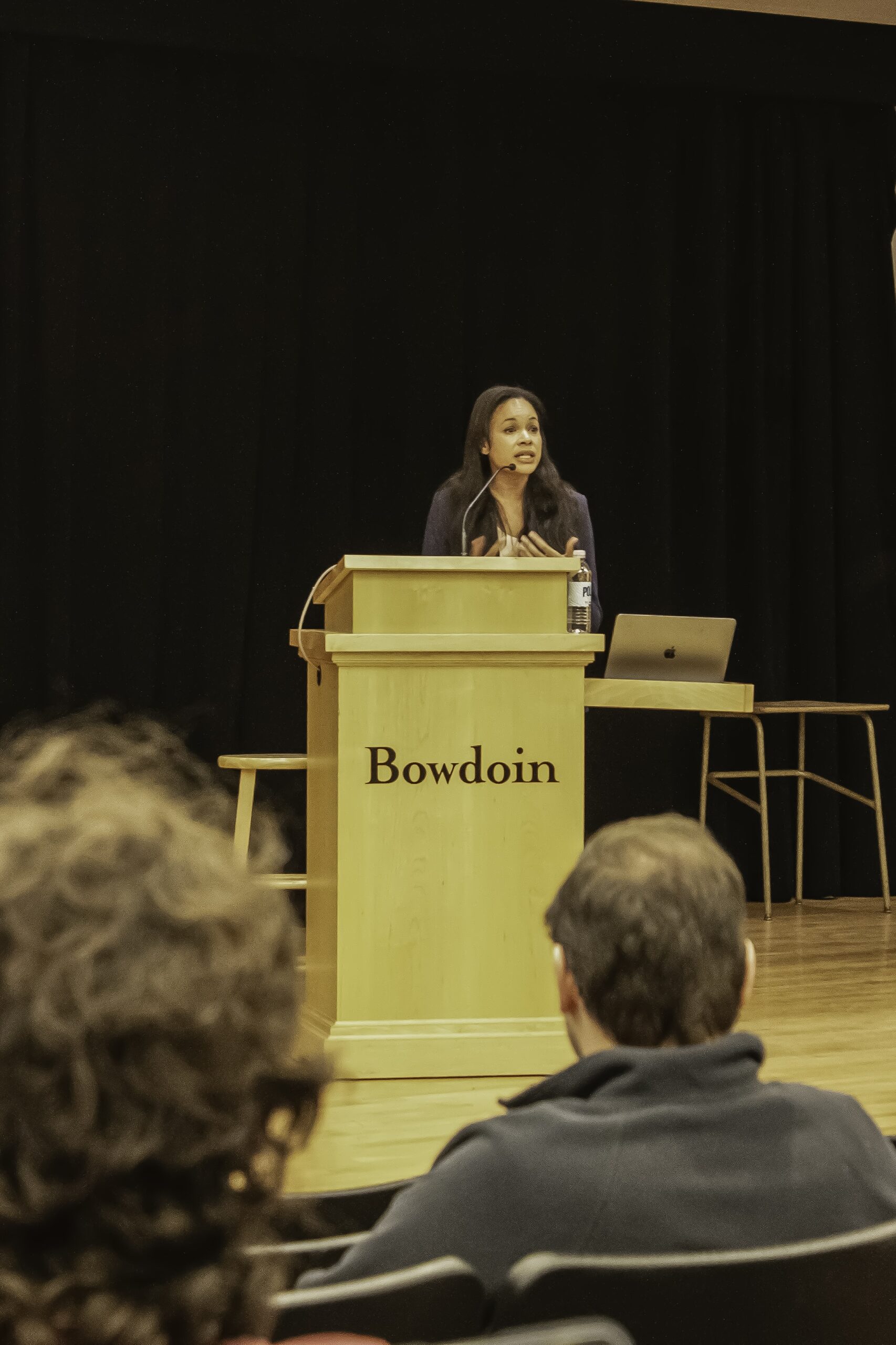Met curator Achi speaks on Africa & Byzantium
May 3, 2024
 Lillian Frank
Lillian FrankOn Monday, Kresge Auditorium was illuminated by images of golden religious icons and glowing visages of early African Christians. The occasion was a lecture given by Andrea Achi, the Jaharis Associate Curator of Byzantine Art at the Metropolitan Museum of Art, titled “The Communities of Africa & Byzantium: Ancient and Modern.” Last year, Achi organized a groundbreaking exhibition at the Met called “Africa & Byzantium” that is touring now through July 21 at the Cleveland Museum of Art.
The Met exhibition highlighted the complex and symbiotic interaction between the art of the Byzantine Empire and that of the African provinces it effectively inherited from the earlier Roman Empire. Achi commented on the way the exhibition builds on a legacy of conveying the interconnectedness of Byzantine and African art that are typically considered separately. In an interview following the lecture, Professor of Art History Steven Perkinson was especially compelled by the way the exhibition explores the boundaries dividing these spheres.
“[The exhibition] is very much in line with a lot of emerging scholarship that’s looking at trade routes, looking at diplomacy, looking at ways in which pilgrims travel around,” Perkinson said.
The evolving Christian traditions of Egypt, Nubia (modern Sudan) and Tunisia all played important roles in the exhibition, but Achi also highlighted many other sites—including the Monastery of Saint Catherine in the Sinai. Chronologically, the exhibition’s focus is on the centuries following the founding of the Byzantine Empire in the fourth century, but also encompasses the medieval period and beyond.
The first part of Achi’s talk provided an overview of the exhibition, highlighting the extraordinary breadth of objects—everything from tesserae to textiles—that bear the marks of this cross-cultural exchange. Materials, techniques and styles evolved in response to changing trade patterns and the transfer of ideas, religious and otherwise. Although Christian art represents a large share of the objects Achi uses to illustrate these trends, the art of Jewish and Islamic traditions also featured heavily in her work.
Achi then turned to a discussion about the care taken to incorporate the views and sensitivities of many contemporary African and religious communities whose history and culture were on display. In an interview with the Orient, Perkinson noted that art curators are increasingly looking to consider the varying relations people have with artifacts.
“They’re trying to learn from the people who actually live with these objects, who experienced the objects, who have a kind of personal connection, family history, cultural history, that connects them with these objects,” Perkinson said.
Following her talk, Achi responded to student questions. Many who attended the talk were surprised by the breadth of connections between seemingly distinct cultures, as well as the sheer volume of objects and source materials Achi assembled through her research.
Dash Rumble ’27 noted that the work challenges preconceived notions about the region.
“It was really interesting to look at the interconnections across the spaces across Byzantium and Africa, but then also looking at Africa as its own culturally prominent center in its own right,” Rumble said.
Achi explained in an interview with the Orient that the exhibition grew from an interest she had first explored while working towards her Ph.D. at New York University’s Institute of Fine Arts. Prior to that, she earned two master’s degrees—one in art history and the other in Ancient Near Eastern and Egyptian Studies—after receiving her bachelor’s at Barnard College.
Achi’s visit to Bowdoin was organized by Professor Perkinson of the Department of Art History, with the support of the Bowdoin College Museum of Art, the Department of Africana Studies and Religion and the program in Middle Eastern and North African Studies. Perkinson urged those who had not yet seen the exhibition to do so as soon as possible.
“What it shows is what we think of as sort of the premodern world and [the] medieval world was much more interconnected than people had ever imagined,” Perkinson said.
Editor’s Note May 7, 2024, at 11:02 p.m.: An earlier version of this article mistakenly reported that Achi is originally from Cleveland, Ohio. Achi is originally from Columbia, South Carolina. Her exhibition is currently touring now through July 21 at the Cleveland Museum of Art.

Comments
Before submitting a comment, please review our comment policy. Some key points from the policy: